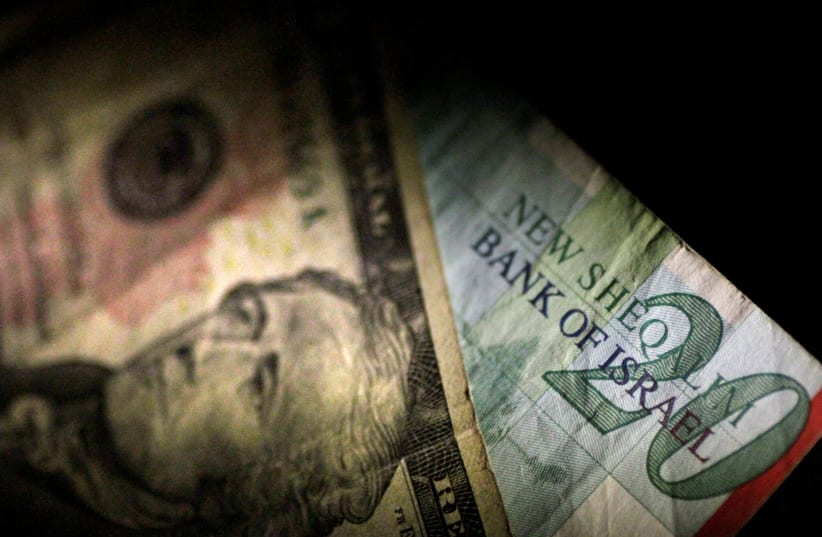We use money every day. It is one of our most important social institutions. Yet, it is rare that we stop to think about it and about its characteristics. The year 2021 that recently ended provided us with opportunities to think about money from a few unconventional angles:
1. The creation of money
It was recently announced that the Bank of Israel awarded a permanent banking license to One-Zero, the digital bank venture.
Granting a banking license in no trivial matter, however, not only for the reasons obvious to everyone. Banking activity is not just about managing client accounts, taking in deposits, and extending loans.
Banks create money. It is common belief that central banks are solely responsible for creating money in the economy. But in fact, most of it is created by commercial, private, banks through the credit extension process.
Under the “Fractional Reserve Banking” system standard today around the world, only a fraction of deposits are backed by cash that is readily available for withdrawal. With the rest, the bank can extend loans. As it does so, it is effectively creating money for use within the economy.
Prior to the recent license award, the last time the central bank approved the establishment of a new bank in Israel was in 1978, more than 40 years ago. Given that a banking license is in effect a license to create money, it is no surprise that these licenses are handed out sparingly.
2. The destruction of money
It is widely believed that the value of money is tightly linked to the quantity of money in circulation. Logic then follows that an increase in the supply of money would result in currency devaluation. These assumptions should be questioned.
Over the past decade, the Federal Reserve, the US central bank, has implemented a super-easy monetary policy that, in addition to zero interest rates, also included a quantitative easing mechanism in which the bank purchased government bonds in the open market – an activity that has been commonly referred to in the public and professional discourse as “money printing.” The supply of money has increased significantly.
However, despite dire prophecies that this policy would bring about a collapse in the value of the US dollar, inflation remained low, and the dollar strengthened over the period by around 20%. Even in 2021, when due to coronavirus-related events, we started to experience a jump in consumer price inflation, the US currency remained stable, and even strengthened by around 7% on a trade-weighted basis.
Throughout this period, the yield, or interest rate, paid on the benchmark 10-year US Treasury, a direct obligation of the US government, remained below 3% – a low level reflecting continued strong confidence in the US economy and government.
On the other hand, in 2021, in one year alone, the Turkish lira lost around 70% of its value relative to the US dollar. Economic and political mismanagement, including significant political intervention by President Recep Tayyip Erdogan in the work of the central bank, led to the loss of what remained of the credibility of the Turkish currency and to its collapse. Reflecting this loss of confidence, interest rates (the yield) on the country’s 10-year government obligations (bonds) jumped to 25%.
To sum, the relationship between the quantity of money, inflation and the stability of currency is not a straightforward one as it is often believed to be. The recent cases of the US and Turkey may imply that the prevailing form of money – “fiat money” – that is backed solely by state guarantee, is inherently different from a commodity whose price drops upon an increase in the quantity available. Perhaps because of its similarity to government debt, its value is driven mainly by the level of confidence in the issuing government and in its ability to meet its financial obligations, rather than simply by the quantity of money in circulation.
3. The politics of money
In addition to it being an interesting financial phenomenon, in the past year, Bitcoin has also become a significant cultural and social sensation. Regardless of your view on the topic, one can acknowledge that at least in one important respect: Bitcoin has contributed to public and professional debates about money. It served as a reminder that money – its structure and design – is not neutral from a political perspective. The way money is produced and designed has social and political ramifications.
Bitcoin was founded with the ambition to break the monopoly of the state (and the banking system that cooperates with it) over money, and to decentralize the economic and political power that comes with this monopolistic power. Bitcoin proponents argue that states fail again and again in managing money and the monetary system. As examples they cite the Great Financial Crisis of 2008, immediately after which Bitcoin was launched, and the super-expansive monetary policy of recent years (that included massive “money printing”).
One can identify the theoretical roots of this worldview in the “Austrian School of Economics,” and particularly in the thinking of Friedrich Hayek. As early as in the 1970s, Hayek, who was awarded the Nobel Memorial Prize in Economics in 1974, promoted ideas of free markets in the production, distribution and management of money – to bring an end to the monopoly of central banks.
Fiat money, the currently prevailing form of money, has existed in its current form since the 1970s, with the formal collapse of the Bretton-Woods Agreement and the Gold Standard. It too has certain political characteristics, notably the concentration of power with the state and central bank – against which, as mentioned, Bitcoin revolts. But there is also an argument that fiat money facilitated the increased economic inequalities that we have been witnessing in many countries in recent decades.
Finally, in 2021, we have seen growing discussion, including in Israel, about the possible issuance of Central Bank Digital Currencies (CBDCs). In addition to potential economic ramifications of such a move, e.g., on the stability of the banking system and the conduct of monetary policy, it is crucial to also identify and discuss in advance possible social and political implications – for example, risk of increased concentration of financial information with the state (through the central bank) and user privacy protection.
The writer is chief strategist of Clarity Capital, and a researcher in the field of political economy of money.


